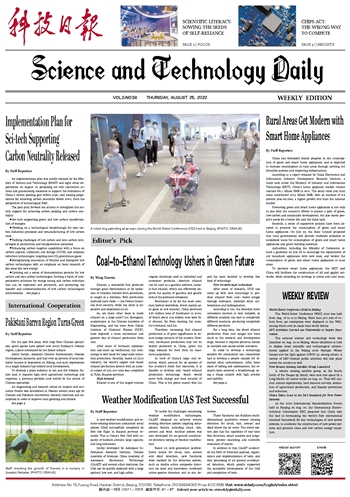
A new weather-modification and remote-sensing-detection unmanned aerial system (UAS) successfully completed its first test flight in Shaanxi province recently. This is China's first UAS with capacity of medium altitude, large capacity, and long endurance.
Jointly developed by Aerospace Information Research Institute, Chinese Academy of Sciences, China Academy of Aerospace Electronics Technology (CAAET) and several other institutes, the UAS can be quickly deployed with a large payload, low cost, and high safety.
To tackle the challenges concerning weather modification technologies, CAAET designed an airborne remote sensing detection system targeting atmospheric factors, including cloud, rain, aerosol and wind. Another system was also developed for air-ground coordinated detection testing of weather modification.
Based on new-generation satellite-borne radars for cloud, rain, aerosol and wind detection, new functions were realized by the detection system, such as double active composite detection via laser and microwave, combined active-passive detection and in situ detection.
Those functions can facilitate multi-dimensional qualitative remote sensing detection for cloud, rain, aerosol and wind below the air route. The entire system also has the capability of real-time fine detection, smart analysis and judgement, precise catalyzing and scientific evaluation of results.
In addition to this, CAAET conducted the R&D of detection payload, organization and implementation of tests, and data processing of air ground coordinated detection, which greatly supported the successful development of the UAS and completion of tests.

 Next
Next




